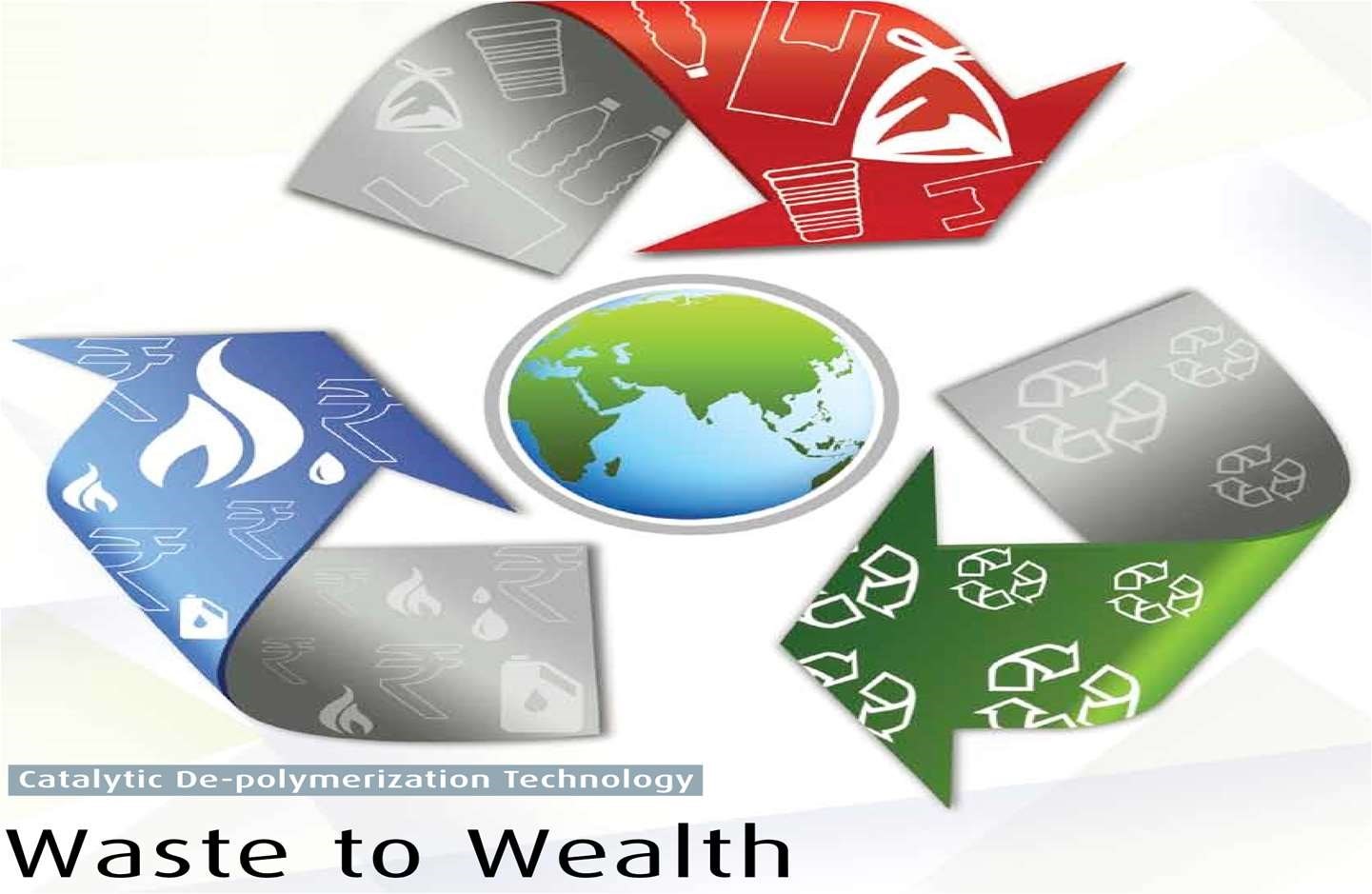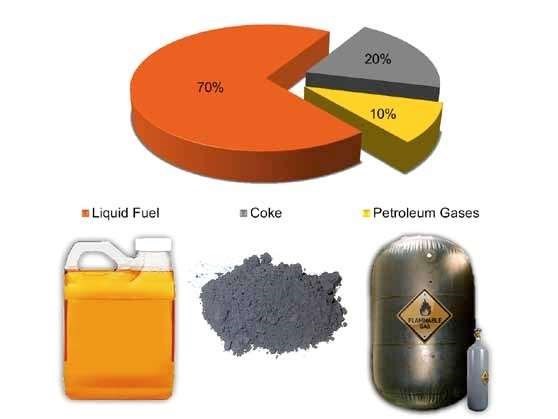 Plastic Waste- a complex scenario
Plastic Waste- a complex scenario
Plastics offer unique techno-commercial advantages and that is why they are irreplaceable in many of modernday applications. Their use is on the rise. But they offer an unmanageable challenge when their utility in that application gets over. It is mainly because they are non biodegradable. They end up contaminating soil and water resources and consequently, the food chain. Governments in any part of the world, including most developed nations, have NOT found satisfactory solutions to the problem of plastic waste management. A global average of about 300 million tons of plastic waste per year has acquired an unmanageable scale.
In India, honourable Supreme Court expressed its serious concern stating, “we are sitting on a Plastic Bomb”. India consumes 11 million tonnes of plastic per year out of which 5.6 million tonnes turns into waste. It is observed that nearly 7% of all municipal waste collected in cities of India comprises of assorted plastic materials.
Technocrats in different countries have been working on many technical approaches to convert the plastic waste into some commercially meaningful entities. But, in most cases, they all ended up creating secondary pollutions that are again NOT acceptable to society at large.
Current disposal methods Disposal is the last stage of plastic life cycle. In India, urban municipal bodies – dump the plastic waste in landfills; burn them in incinerators; or let them litter, which leads to serious ecological problems.
Problems with Land fill -- It takes 1000s of years for polyethylene bags and other plastic waste to break down. When plastics break down, toxic substances leach into the soil & sub soil water bodies and eventually enter the food chain. Not only does plastic dump keeps occupying land but also results in choking landfills. Land is a limited and valuable resource. Landfill is hence a non-desirable proposition and unviable in the long run. Microbes that are responsible for soil fertility suffocate in landfill areas and migrate away from there leaving the land mass as barren land for 1000s of years to come. LANDFIL NEEDS TO BE AVOIDED.
Problems with Incineration -- Incineration of assorted plastic wastes produces large amount of toxic as well highly polluting gases responsible for not only global warming but also the Dioxins & Furans thus produced are highly toxic. Plastic pollution of a particular geographical area manifests into global air pollution. INCINERATION WILL
ADVERSELY AFFECT THE WHOLE MANKIND.
Problems with littering -- Plastic litter chokes up municipal drains and eventually ends up as floating pollution in the oceans of the world. It has already surpassed dangerous levels and unmanageable size of money and efforts are required to address the problem. ALLOWING THE PLASTIC TO LITTER IS A SOCIAL CRIME.
The waste plastics are known for creating a very serious environmental challenge because of their huge quantities and the disposal problems caused by them.
To avoid the impact of the plastic in the environment, the recycling of plastics constitutes a valid alternative. Primarily, mechanical reprocessing is the method of plastic recycling which is feasible only when high purity selectively collected wastes are available. Alternatively, there is an attractive process for recycling by thermal or catalytic method which produces hydrocarbon. The pyrolysis can be cost effective compared to other processes. The pyrolysis thermally degrades the plastic component to produce an oil and gas product. This oil may be used as a liquid fuel or returned for refining.
PLASTIC DEPOLYMERISATION
The low-temperature catalytic depolymerization line is used for processing of waste plastics. This device works on the principle of depolymerization (pyrolysis) of the polymer to hydrocarbon products, which are pyrolysis oil, pyrolysis gas, and a solid residue - carbon.
Pyrolysis is the thermal decomposition of organic carbon-containing materials, while preventing the ingress of media containing oxygen or other oxidants. The input materials are heated to temperatures of 400° - 500° C, resulting in the release of volatile compounds.
When the raw material is heated above the thermal stability of the present organic substances found in the raw material, there is a cleavage of the macromolecular matrix to a stable low molecular weight liquid and gaseous products, as well as a solid residue. Burning does not occur, as it would during the incineration of waste, meaning that depolymerization technology does not produce harmful emissions and has no negative impact on the environment.
In the process of depolymerization, cracking occurs with the admixture catalyst. The catalyst lowers the required reaction temperature. One advantage of the depolymerization process at lower working temperatures is also lower fuel consumption for heating.
The catalyst is continuously added to the process, which ensures continuous and stable activity, and therefore balanced thermal conditions with a favourable effect on uniform product quality.
The catalyst lowers the transformation reaction temperature from approximately 800° C to temperatures in the range of 400° - 500° C, depending on the input material. The basic condition for securing successful process of depolymerization is high quality of input materials, which determine the quality of the final product. It is important to eliminate the presence of PVC and PET, these plastics would produce highly toxic fumes in the depolymerization process.
When depolymerizing raw materials, mostly liquid depolymerization products originate, whose properties depend on the conditions of the decomposition process, especially at the height of decomposition temperature, which determines their character - oily, or waxy. The resulting products have a similar fractional composition as those made from crude oil. Output products are approaching light heating oil and natural gas in their composition, structure and calorific values.
The output products from processing waste plastic in the depolymerization process are pyrolysis oil, pyrolysis gas, and solid residue - carbon. The liquid product is a valuable raw material for further use in the petrochemical and energy industries, as a component in the production of fuels and the like. The gaseous product may be utilized in the process of heating the raw materials as fuel or it may be used to generate electricity in a cogeneration unit.
Depolymerization equipment for using plastic waste enables material and energy savings of a form and character that cannot be achieved by other available technologies. The main product of the catalytic depolymerization is a liquid product - a mixture of hydrocarbon fractions containing fuel oil components, paraffin, wax and others. The yield of the liquid product is in general about 80 % by weight of the incoming waste plastics (60 % of the heavy fraction and 20 % of the light fraction). The input energy recovery of waste plastics also causes the use of gaseous products of pyrolysis to heat processing equipment. Gaseous products represent roughly 10 % of the input raw materials. The remaining 10 % consists of carbon products.


The percentage of finished products and the yield depends on the quality of the input materials. If the input materials are highly soaked with dust, dirt, foreign bodies, sugar syrup, paper labels etc. the finished products yield will be lower. If the Plastic from municipal waste is cleaned (washed) and made free from dust and dirt, other particles the yield will be higher.
The depolymerisation process qualifies as a GREEN ENERGY project as it does not produce harmful gases or do not generate waste materials which needs further processing/disposal.
The project can be covered under the schemes Made in India initiative, and Swatch Bharat Movement
IS THE TECHNOLOGY AVAILABLE IN INDIA ?
Yes, the technology is available in India and a pilot project rated at 5 TPD is running for last about 2 years near Mumbai.

NATIONAL & SOCIO-ECONOMIC BENEFITS OF THE PROJECT --
- Prevention of Major Environmental Pollution
Solid wastes threaten human health, as well as cause environmental pollution. Developed countries fund research and development studies that aim to eliminate solid wastes from the environment and the preferred method is recycling since it creates an additional economic value.
Specifically, end-of-life plastic waste is harmful to the environment because it is: Flammable (petroleum derivative are hard to extinguish when under fire), High in volume, Poisonous (release toxic gases on burning), Non bio degradable (causes long term disturbance to ecology), Scattered in environment (lack of specific gathering areas - left to garbage dumps, road sides, various kinds of empty territories), and chocking of municipal drains.
Depolymerisation of plastic waste into high calorific value fuel offers excellent opportunity to address this environmental concern. - Value Addition by processing environmentally harmful Waste Plastic
REQUIREMENTS OF THE PROJECT – 20 TPD rating
The project is scalable with a minimum capacity of 5 TPD to 200 TPD, an average project with input at 1TPH is considered for working here below
- Land and building- building of about 1000 Sq. meter, and top covered space of about 2000 Sq. meter for storage of input materials, area for movement of trucks etc 1000 Sq. meter, making about 4000 sq. meter land.
- Power connection- about 200 KW
- Man power- skilled 2 no, unskilled 8 no, engineer 1 no per shift.
It is recommended to run the project on 24 hrs a day basis, so three shift operation is recommended. - Input materials- plastic waste 1 TPH or 24 TPD
- Water- about 1000 litre per day (for human consumption)
- Compressed air- rated ta 8 bar, 10 HP compressor for general cleaning purpose.
- Capital cost of the equipment- about Rs. 24 crore.
LEAD TIME REQUIRED
Since the project is a tailored project, need a lead time of about 6 months for equipment manufacturing. About 8 weeks for assembly, installation and commissioning making approximate 8 months from the date of confirmed order backed up with advance payment.
TYPICAL PAYBACK PERIOD
Since the input materials is waste plastic having very low or no value, and the finished product is OIL and Gases having very high value, the profitability of the project is very high.
The typical payback period is about 3 years.
The life of equipment is very high subjected to GMP.